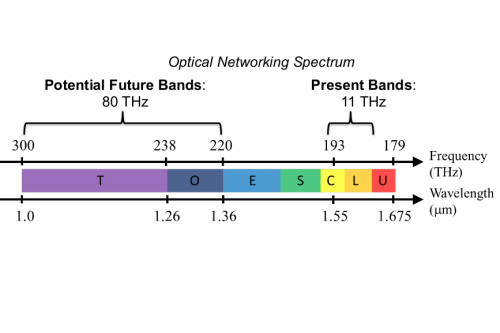Researchers open up 80THz of bandwidth for data centres
Researchers from the universities of Bristol and Keio with industrial partners have unlocked 80 THz of fibre-optic bandwidth that will enable future exascale data centres and transform 5G networks.

Dr Georgios Zervas, Senior Lecturer in Optical and High Performance Networks in the Department of Electrical and Electronic Engineering, said: “The technology and system proposed and prototyped will unlock the new frequency band and networks to support future exascale data centres, ‘zero-latency’ tactile optical internet, internet of everything, smart cities, fog computing and big data infrastructure among others. This is the outcome of a recent collaboration between Bristol, Keio and other Japanese institutions that brings together people with complementary yet common vision and pioneering concepts.”
The technology fabricated and tested is based on cascaded arrayed waveguide gratings (AWGs) and is designed to potentially construct a 1600 x 1600 wavelength router that can guide data at the speed of light. Specially designed quantum dot chips are used for light sources which were originally developed by NICT in Japan.
This single passive optical system can interconnect over one million end points such as, broadband home users, IoT devices, data centre servers, while offering at least ten Gb/s per end point. Critically it is also future proof since it’s transparent to any communication signal and it can also potentially consume zero power due to its passive nature.
Hiroyuki Tsuda, Professor of Faculty of Science and Technology at Keio University, added: “The enabling technologies for the new frequency band are the quantum dot based optical devices and the silica planar lightwave circuits designed for the new band.
“The collaboration between the University of Bristol who has extensive knowledge of the network architecture, and our Japanese research group with device technologies will create an ultra-high capacity, power-saving optical network system, in particular, for data centres.”
Paper
‘Full-mesh T- and O-band wavelength router based on arrayed waveguide gratings‘ by Nazirul A. Idris, Ryogo Kubo, Georgios Zervas, Hiroyuki Tsuda et al is published in Optics Express [open access]
